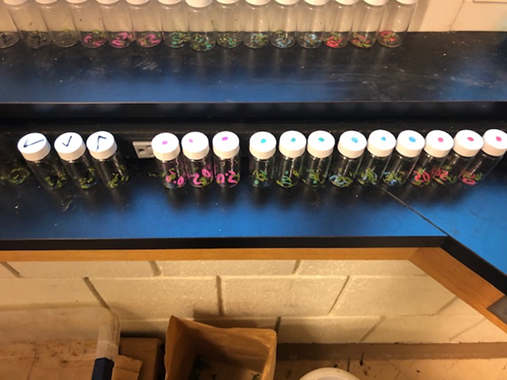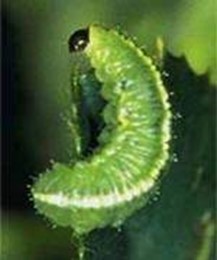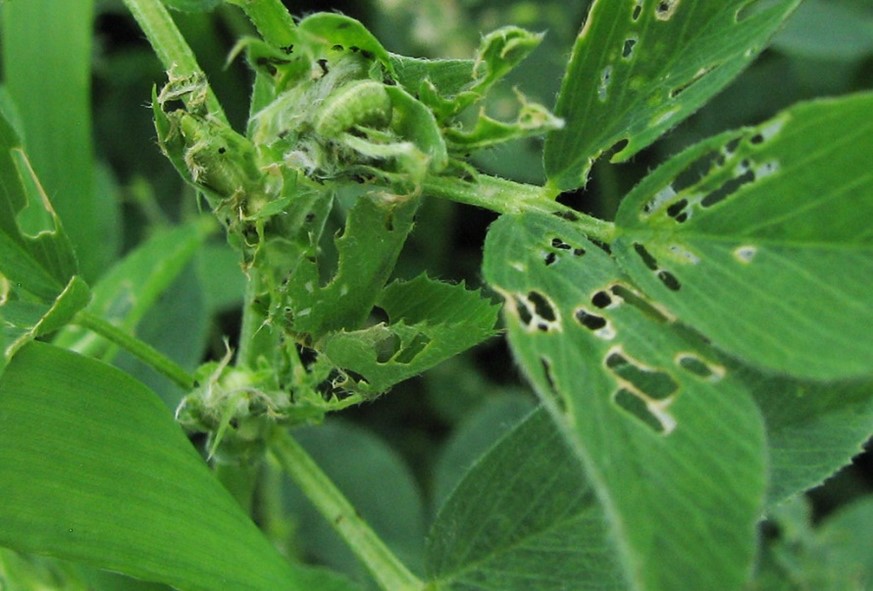Alfalfa Weevil Insecticide Resistance June 2022
As we move past alfalfa weevil season, I wanted to provide an update on the Oklahoma Alfalfa Weevil Insecticide Resistance Study (OAWIRS).
As mentioned in a previous edition, OAWIRS is a statewide effort working to:
- Identify the level of resistance to pyrethroid and other insecticides in locations where it has established.
- Map the spread of resistance throughout Oklahoma.
- Identify risk factors for the development of insecticide resistant alfalfa weevil.
- Develop resistance management recommendations for alfalfa producers and stakeholders
to mitigate economic impacts of insecticide resistance.
Alfalfa weevil resistance to products containing lambda cyhalothrin continue. Over the past several years field efficacy trials have consistently shown poor (<50%) control (Table 1). Field collected larvae for laboratory bioassays corroborate field test findings producing 20% or less efficacy.
Table 1. Average Percent Control (lambda cyhalothrin) in Field Trials 2020-2022
| Treatment | Rate/A | Total % Control 2022 | Total % Control 2021 | Total % Control 2020 |
|---|---|---|---|---|
| Warrior II (a.i., lambda cyhalothrin) |
1.92 | 19.0 | 50.0 | 32.0 |
Picture 1. Alfalfa Weevil Larvae (Photo Credit, Univ. of Illinois)
Picture 2. Alfalfa Weevil Damage. (Photo Credit, Cornell Univ.)
This season we looked at (2) additional labeled pyrethroid products to assess the potential for cross-resistance to other pyrethroids (Group 3A MoA) as well as Indoxacarb (Group 22A MoA). At this point, bioassays continue to show positive results averaging 80% and above (Table 2). However, spring 2022 field trials proved sporadic, with much lower averages and additional reports from producers citing reduced efficacy in several of the labeled products other than lambda cyhalothrin.
Table 2. Vial Bioassay Two Location Average Percent Control, 2022
| Treatment | MoA Group | Total Larvae | 48h % Control |
|---|---|---|---|
| 0 (Acetone only) | 30 | ||
| Lambda Cyhalothrin | 3A | 30 | 8.5 |
| Indoxacarb | 22A | 30 | 100 |
| Baythroid | 3A | 30 | 80 |
| Mustang Maxx | 3A | 30 | 90 |

It is unclear at this point if weather may have played a role in this season’s efficacy trials or other factors were at play. We will continue to monitor and gather data on labeled products to identify any progression in cross-resistance.
Any issues with resistance we want to hear about, especially as it pertains to pyrethroids. To date we have consistent data from (2) locations. We would like to expand to other areas of the state next season to get a more comprehensive look at resistance and its level throughout the state.
If you have any questions or would like to coordinate a site for collection next season you can contact Kelly Seuhs at (405) 744-6456 or k.seuhs@okstate.edu.


